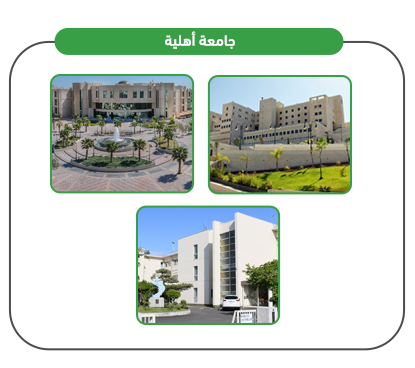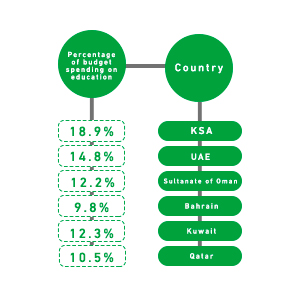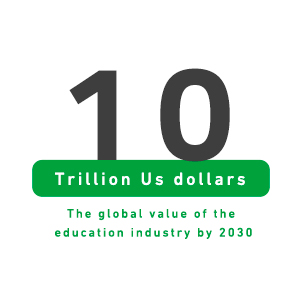The feasibility study for a private university project aims to conduct a comprehensive and integrated assessment of the economic, technical, and administrative aspects, ensuring the establishment of a leading educational institution that meets the needs of society and contributes to enhancing the quality of higher education. The study is based on an in-depth analysis of the target market to determine the demand for academic specializations and innovative educational programs, taking into account modern trends in education and changing labor market requirements. The study includes estimating the costs associated with establishing the project’s infrastructure, including equipping classrooms, laboratories, libraries, and sports facilities, in addition to calculating operational costs and potential revenues from tuition fees and other services. The study also focuses on legal and regulatory aspects, by identifying licensing requirements and accreditation of academic programs to ensure compliance with local and international standards. It should also be noted that the study includes developing effective marketing strategies aimed at attracting students and qualified faculty members, thus strengthening the proposed university’s position as a distinguished educational institution.

The Private University Project is a private educational institution that aims to offer pioneering academic programs that meet students’ aspirations and align with the evolving needs of the labor market. The university seeks to provide an advanced educational environment based on the latest technological means and educational methodologies, enhancing the quality of higher education and contributing to the preparation of qualified cadres capable of leading economic and social development. The university offers a diverse range of academic programs spanning scientific, literary, technical, and engineering disciplines, with a focus on advanced curricula that keep pace with the latest global developments. The university places special emphasis on attracting qualified and experienced faculty members, while supporting scientific research and encouraging innovation to enhance academic excellence. On the practical level, the university seeks to develop strategic partnerships with international and local institutions to provide practical training opportunities for students, giving them a competitive advantage in the labor market. The Private University Project represents a model of distinguished higher education that enhances the quality of educational outcomes and places the proposed institution at the forefront of academic choices for students aspiring to a promising and bright future.



Executive Summary
Study of project services/products
Market Size Study
Risk study
Technical study
Financial study
Organizational and administrative study

The Education Sector in the GCC Countries
Because Mashroo3k Economic Consulting and Market Research believes in the importance of the education sector and its role in localizing the national workforce, it has decided to present the following key indicators of the education sector in the GCC countries, calling for investment in this important sector:
The total number of students in early childhood development (including nurseries and kindergartens) in the GCC countries, according to the latest available statistics, reached 851,500 students.
The number of students in school levels in the GCC countries was estimated at approximately 9.3 million students (79.4% in the public sector and 20.6% in the private sector).
The number of students in adult education centers was estimated at approximately 181,247 students.
The number of higher education students was estimated at 2,206,446 students.
The number of early childhood teachers was estimated at 50,647.
The number of school teachers was estimated at approximately 727,904.
There are 5,806 existing early childhood education institutions.
There are 32,310 existing primary education institutions.
In recent years, governments in the Gulf Cooperation Council (GCC) countries have sought to bridge the gap between education and the labor market. They have adopted educational curricula that increase the share of vocational and technical education and encourage learning through modern media and technologies. In this context, we should not fail to point out the increased spending in these six countries on education and its quality, in order to graduate generations that meet the private sector’s workforce needs.
According to the latest statistics, Saudi Arabia spends 18.9% of its budget on education, the UAE spends 14.8% of its budget on education, the Sultanate of Oman spends 12.2% of its budget on education, Bahrain spends 9.8% of its budget on education, Kuwait spends 12.3% of its budget on education, and Qatar spends 10.5% of its budget on education. By 2023, the private education market in the GCC will reach $26.2 billion.
Global Education Sector
The global education services market was valued at approximately $2,882.52 billion by the end of 2021, and global experts expect the market to reach $3,191.79 billion by the end of 2022, achieving a compound annual growth rate (CAGR) of 10.7%. By 2026, the market will reach $4,623.90 billion, representing a CAGR of 9.7% over the forecast period.

By 2030, the global value of education as an industry will reach US$10 trillion.
By 2024, the value of online education worldwide will reach US$247.46 billion.
The AI education market will expand at a compound annual growth rate of 36% from 2022 to 2030.
In 2000, the number of students worldwide was approximately 657 million, and this number increased to 739 million in 2019.
In 2000, the number of secondary school students was approximately 452 million, and this number increased to 601 million in 2019.